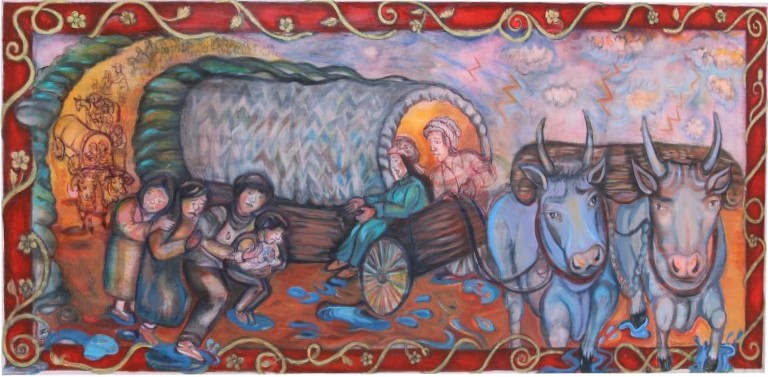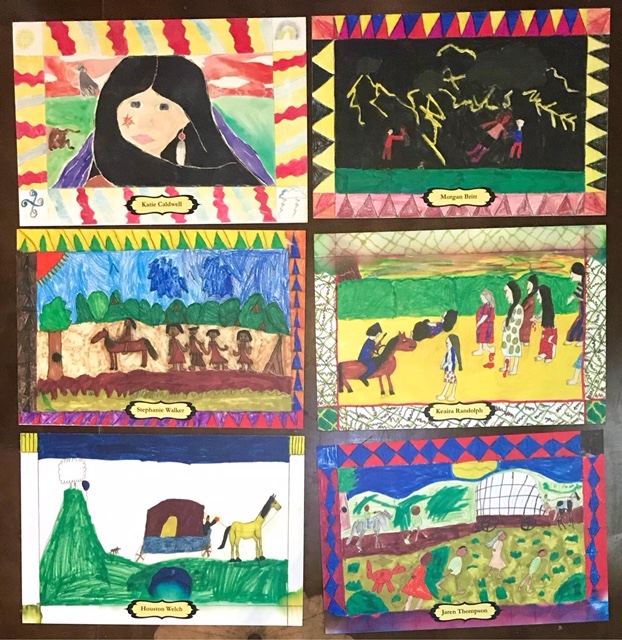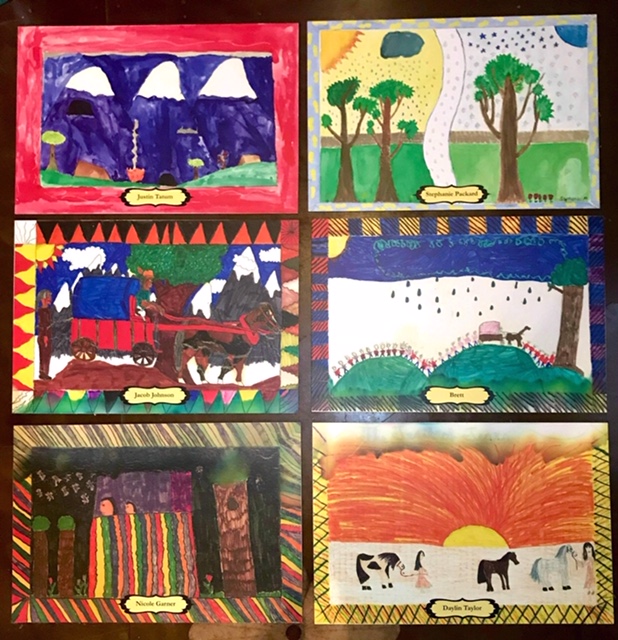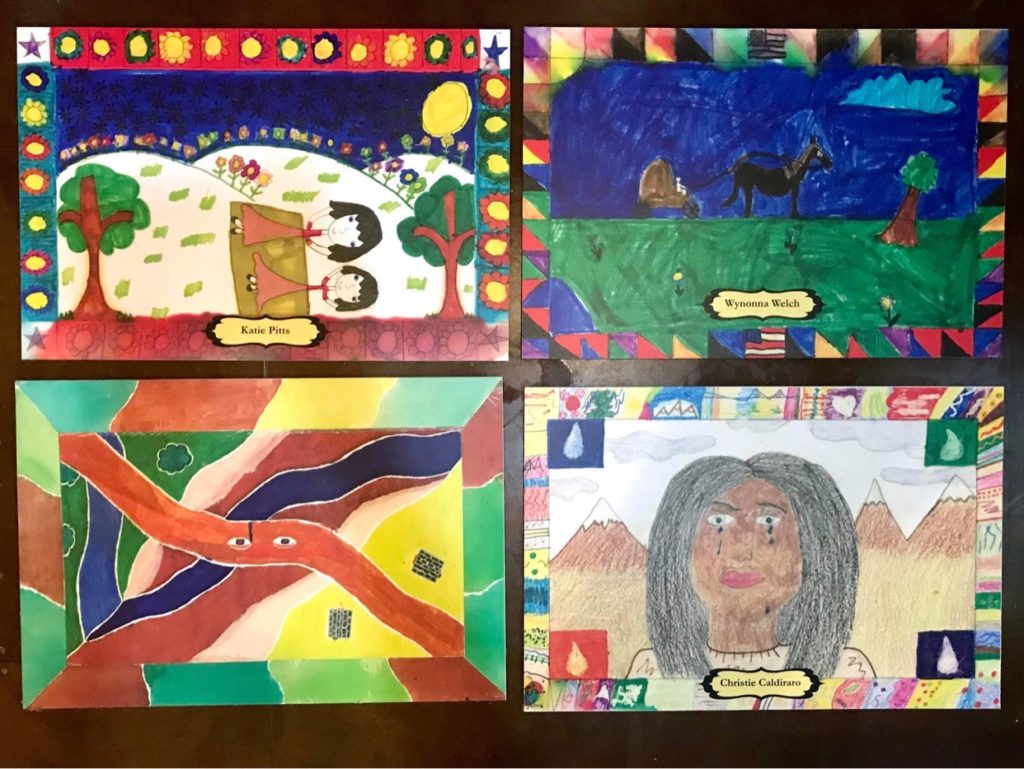
This narrative painting, located on the wall inside the viaduct, adjacent to the Trail of Tears Interpretive Center in Pulaski, Tennessee, depicts the oxen pulling the wagons which died after ingesting poisonous weeds at the site.
The Trail of Tears was especially difficult on the children and the elderly. The journey was so calamitous that the U.S. government had to stop to purchase children’s coffins in Pulaski.
From the interpretive plaque that accompanies the painting, Children and the Oxen.
“Information on the Bells route of the Trail of Tears can be gleaned from the records of Lieutenant Edward Deas, the military escort who traveled with the detachment. His letters mention some of the difficulties the Cherokee faced while traveling in, and around, Pulaski, such as rough road conditions and the death of some oxen from eating poisonous weeds. In addition, coffins and shoes for children were purchased in the area, indicating the loss of loved ones on the journey and how proper clothing was till needed for the long trek ahead.”
From the interpretive plaque that accompanies the children’s paintings inside the viaduct:
“During the mid-2000s, artist Bernice Davidson taught several residencies for the Tennessee Arts Commission in Giles County Schools. From kindergarten through high school, the children learned about the Trail of Tears. They also studied about how to draw a figure in proportion and how to show expression on faces. Here are the heart felt drawings that the artist has saved.”



A portion of the installation along the inner walls of the viaduct is dedicated to the children by the children, with a walk-through exhibition of paintings by Giles and Lincoln county students ranging from Kindergarten to 12th grade.
